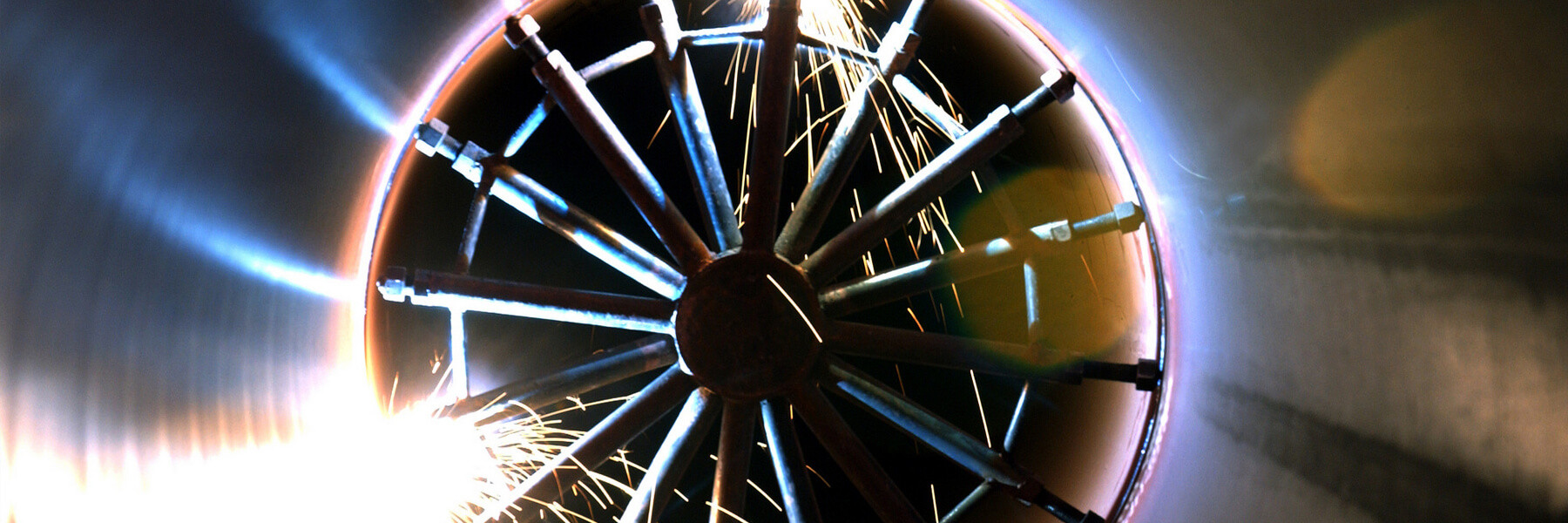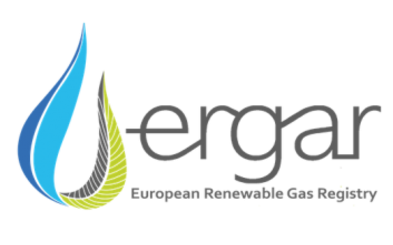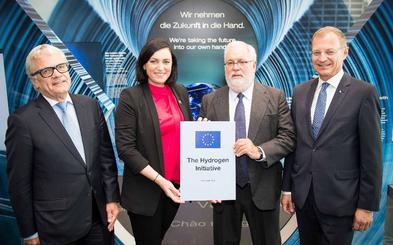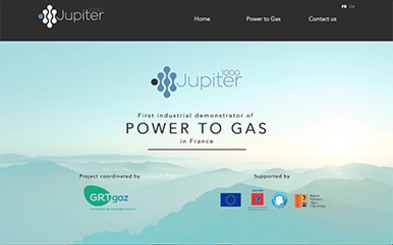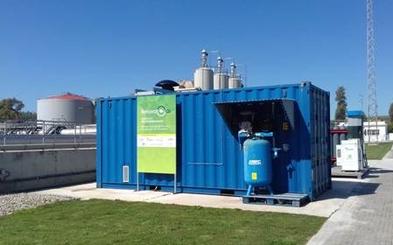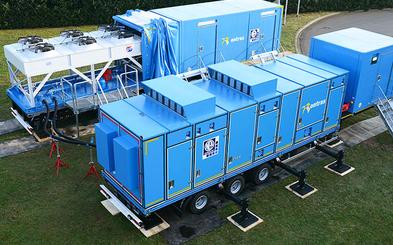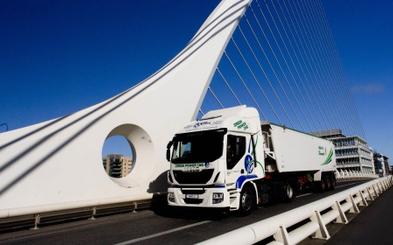INNOVATIVE PROJECTS PLATFORM
To efficiently build on its Members' actions to promote or contribute to innovative technologies, regulation and business models, and partnerships across the value chain, ENTSOG has created the Innovative Projects Platform to map TSOs’ projects and partnerships on Research, Development and Innovation (RDI) activities for the energy transition.
This public platform provides information and links to enable exchange of best practices applied at national level and in some cases, across borders through partnership efforts.
These innovative solutions focus on topics such as repurposing infrastructure for renewable gases and projects for hydrogen, CCS and CO2 transport, biogas, energy system integration. These innovative applications support the achievement of the current EU goals of reducing GHG emissions and reaching the decarbonisation goal of net-zero by 2050.
*Disclaimer: The content published on this page is information owned by TSOs and not by ENTSOG. It is therefore published on behalf of TSOs. Please note terms and conditions of use of the website (including article 7) are fully applicable to this page.
Technology
Discover here how technologies can optimise the usage of the grid, make digital layer connections and support decarbonisation of the EU gas system. Technology R&D has a vital role in the energy transition. ENTSOG Members (TSOs) are developing new and innovative technologies to offer sustainable solutions for the gas sector.
Regulation & Business Model
Stay informed on how ENTSOG Members (TSOs) engage in development of the new energy products and services to foster uptake of renewable and decarbonised gases into the grid.
Partnership
Look at new partnerships and initiatives formed by ENTSOG’s Members (TSOs). They are actively working together as well as with various stakeholders on projects aimed at decarbonisation of the gas sector and of the whole EU economy.
Hydrogen
Hydrogen is a gas under standard conditions and there are also different hydrogen derivatives, such as ammonia and synthetic electrofuel. sHydrogen can be produced from diverse process technologies, such as electrolysis and steam-methane reforming (with or without carbon capture and permanent storage of this carbon to reduce emissions).
Repurposing for Renewable Gases
Repurposing of pipelines for renewable gases transport (e.g. hydrogen) is a cost effective way to meet decarbonisation goals and can be undertaken without compromising the ability of the natural gas network to ensure security of supply.
Biogas
Biogas is obtained via the anaerobic decomposition of the organic matter. After the process of upgrading, biogas becomes biomethane with the same quality standard as natural gas and can be transported via the existing grid infrastructure.
CCS and CO2 Transport
Carbon Capture and storage is the process of capturing CO2 from a set of possible sources, such as for example fossil fuel power plants, transporting it to a storage site, and depositing it underground on a permanent basis. The aim is to prevent the release of CO2 into the atmosphere.
Energy System Integration
Integrated infrastructure planning for electricity and gases is essential to support the decarbonisation of the energy system sector, particularly for facilitating the transport of renewable gases like hydrogen.
CNG
Compressed Natural Gas (CNG) is a fuel source that is made from compressing natural gas to less than 1% of its standard atmospheric volume. CNG combustion produces fewer climate-impacting gases than other fossil fuels.
Digitalisation
Digitalisation can bring various benefits to day-to-day operations such as enhanced control over the gas quality and cost reductions. TSOs look at data-driven solutions to boost performance, efficiency and competitiveness.
Heating & Cooling
Cutting the energy consumption in heating and cooling in buildings and industry can be achieved through various technologies. TSOs are working on developing cost-efficient solutions for the decarbonisation of this sector.
Certification of green gases
To ensure the cross-border scale up and tradability of renewable, decarbonised and low-carbon gases. This can be achieved via pan European Guarantees of Origin and Certification Schemes.
Energinet
ERGaR
ERGaR is founded as a cooperation between European registries of biomethane certificates that will enable cross border trade of biomethane certificates among the member registries. ERGaR will be the Europe-wide recognised organisation for administering and mass balancing volumes of renewable gases virtually distributed along the European natural gas network.
Contact: jbg@energinet.dk
Gasunie Deutschland Transport Services GmbH, Thyssengas GmbH
ELEMENT EINS
Gasunie Deutschland, Tennet and Thyssengas will plan a 100 MW power-to-gas-installation. Planned operation in different phases from 2022. It will become the biggest power-to-gas-installation in Germany.
Contact:
- Gasunie Deutschland - philipp.vonbergmann-korn@gasunie.de,
- Thyssengas - gerhard.huelsemann@thyssengas.com,
- TenneT - julia.weich@tennet.eu
Ontras Gastransport GmbH, SNAM Rete Gas S.p.A.
Linz Hydrogen Initiative
Austrian Presidency of the EU Council started the “Linz Hydrogen Initiative” and invited to a high level conference on the eve of the Informal Meeting of the Energy Ministers on 17 September. The conference focused on the topics of renewable hydrogen, energy storage technologies and innovative energy technologies for energy intensive industries.
Contact: ina.adler@ontras.com, dina.lanzi@snam.it
GRT GAZ, TERÉGA
Jupiter 1000
Teréga with GRTgaz developed a demonstration project for Power to Gas in Fos-sur-Mer. The aim of this initiative is to help shape this new sector by developing the technologies concerned, building the associated economic and regulatory models, and overcoming current technical reservations.
Contact: jeanmarc.brimont@grtgaz.com, cecile.boesinger@terega.fr
Enagás S.A.
RenovaGas
RENOVAGAS is a research project whose first phase finished in 2017. It first aim was the development of a 15 kW demonstration plant for the production of synthetic natural gas (SNG) from the electrolytic production of hydrogen with renewable energy sources (RES) and its combination directly with a biogas stream, that is, without separating CO2 from the methane, through a methanation process, so the synthetic natural gas obtained was fully renewable.
Contact: jrubio@enagas.es
Snam Rete Gas S.p.A.
Biogasdoneright
Snam, together with the Consorzio Italiano Biogas and Confagricoltura (CIB) has developed and presented a manifesto to the public in support of the Italian biomethane supply chain. CIB developed an innovative approach to produce sustainable biogas from winter crops called Biogasdoneright.
Contact: Simona.Dangelosante@snam.it
Ontras Gastransport GmbH
MoBIO 800
ONTRAS in cooperation with the NEUMAN & ESSER Group, developed a mobile biogas compressor. This compressor not only avoids expensive downtime at injection plants, it also enables redirection of pipeline gas during maintenance work. This helps ONTRAS to minimize flare-off emissions. Also, in case of a failure or malfunction in a stationary system, it should be possible to connect and use the mobile solution in the short-term.
Contact: ralf.borschinsky@ontras.com
Gas Networks Ireland
The Causeway Project
The Project will see the formation of a national Compressed Natural Gas (CNG) refuelling network, a renewable gas injection facility and the deployment of a fleet of CNG vehicles.
Contact: Dan.Fitzpatrick@gasnetworks.ie
National Grid Gas
Project GRAID
National Grid's robotic inspection device GRAID can inspect the inside of live, high-pressure gas pipelines, up to 100 bar(g) and provide reliable condition data on our critical assets. This technological leap will allow NGGT to cut asset maintenance costs by eliminating unnecessary excavations and providing data to allow asset life extension. It will also generate potential carbon savings of more than 2,000 tonnes annually, equivalent to the emissions from almost 500 UK households. It is a critical benefit as we move towards a low-carbon economy. In addition, National Grid are open and willing to discuss collaboration projects with any interested TSOs.
Contact: David.Hardman@nationalgrid.com
Gas Connect Austria GmbH
Wind2hydrogen
The Wind2Hydrogen pilot facility in Auersthal, Lower Austria was in operation from January 2014 until the end of 2017. It converted power from wind turbines into transportable, storable hydrogen using a new, specially developed electrolysis process that responds very quickly to changing loads from a wind farm, and can economically produce high pressure of around 165 bar.
Contact: robert.paulnsteiner@gasconnect.at
